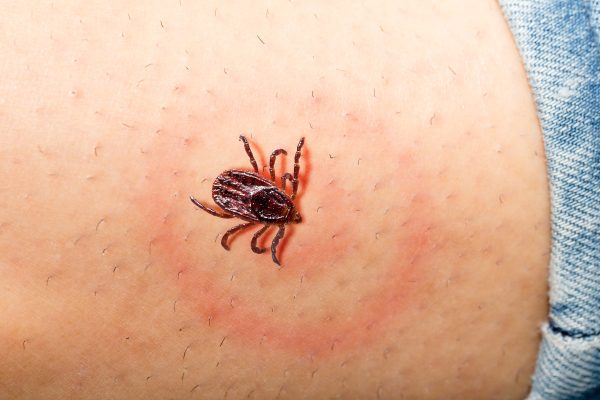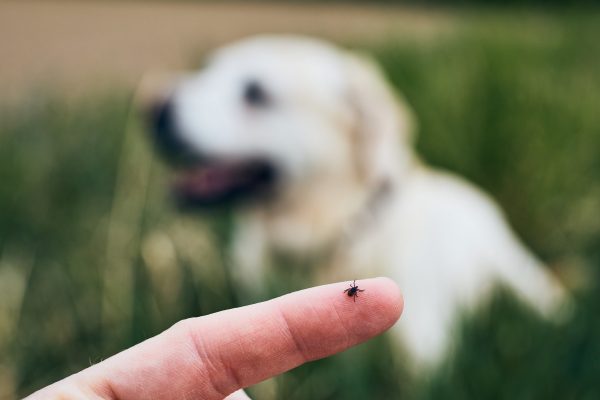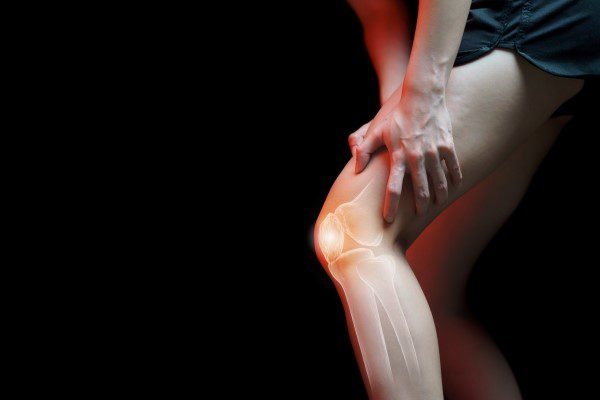Lyme disease is a serious infection that can cause a number of different symptoms, including arthritis pain. Lyme arthritis is the most common symptom of late-stage Lyme disease and can be extremely painful and debilitating. If you highly suspect you have contracted Lyme disease, you must see a doctor as soon as possible for diagnosis and treatment. Lyme disease is often treated with antibiotics, but there are other modalities that can help relieve the pain and symptoms of Lyme arthritis.
What is Lyme Disease, and how is it related to arthritis pain?
Lyme disease is from a bacteria called Borrelia burgdorferi, transmitted to humans through the bite of an infected tick. Lyme disease can cause a different range of symptoms, including joint pain. In fact, Lyme arthritis is the most common form of arthritis associated with Lyme disease. Lyme arthritis typically develops several months after a person is infected with the bacteria and often affects only a single joint, such as the knee or elbow. While Lyme arthritis can be excruciating, it is usually not permanent and can be effectively treated. However, it can be challenging to diagnose Lyme disease, as its symptoms can mimic those of other conditions. As a result, it is vital to see a doctor if you develop any unexplained joint pain, mainly if you are living in an area where Lyme disease is prevalent.

How can you tell if you have Lyme Disease and what are the symptoms?
The common symptoms of Lyme disease are flu-like symptoms, like fatigue, fever, and headache. In some cases, Lyme disease can also cause joint swelling and pain, particularly in the knees. This is known as Lyme arthritis. Lyme disease can be hard to detect because its symptoms are similar to other illnesses.
Are there any home remedies or lifestyle changes that can help reduce arthritis pain from Lyme Disease?
There are a number of lifestyle changes and home remedies you can do to alleviate arthritis pain from Lyme disease. These include:
- Rest. It is important to rest the affected joint to allow it to heal.
- Ice. Applying ice to the affected joint can help reduce inflammation and pain.
- Heat. Applying heat to the affected joint can also help reduce pain.
- Physiotherapy. Gentle exercise can help maintain the range of motion in the affected joint and strengthen the muscles around it.
- Weight loss. Losing weight helps in reducing the stress on the affected joint and relieves pain.
- Quit smoking. Smoking tobacco products can increase inflammation and pain in people with arthritis.
What are alternative options to treat Lyme Disease and Arthritis pain?
There are some alternative options to treat Lyme Disease and Arthritis pain. These include:
Acupuncture. This traditional Chinese medicine technique involves inserting needles into the skin at specific points. Acupuncture is thought to help reduce pain by releasing endorphins, natural pain-relieving chemicals.
Massage. Massage can help relax the muscles and improve circulation. It may also help reduce pain and inflammation.
Yoga. Yoga can help improve flexibility, muscle strength, and circulation. It may also help reduce stress, which can aggravate pain.
Chiropractic care. Chiropractors use hands-on manipulation to adjust the spine and joints. This is thought to relieve pressure on nerves and improve pain.
WAVE 1. WAVE1 is an advanced bioenergetic wearable that restores and balances cells to improve your immune system while lessening the symptoms of Lyme disease.
Are there any ways to prevent arthritis pain from developing in the first place if you have Lyme Disease?
There are several ways to prevent arthritis pain from developing in the first place if you have Lyme Disease. These include:
- Treating Lyme disease early. It is essential to catch Lyme disease early and treat it immediately to reduce the risk of developing arthritis.
- Avoiding ticks. Ticks are carriers of Lyme disease. To avoid being bitten, you should apply insect repellent and wear pants and long sleeves outdoors where ticks are common. Inspect your body for ticks after spending time in these areas.
- Showering after being in tick-infested areas. This can help remove any ticks that may be on your body before they have a chance to attach themselves.
- Wearing light-colored clothing. This can make it easier to spot ticks.

How do other conditions that often occur with Lyme Disease, such as fibromyalgia, affect arthritis pain relief strategies?
Other conditions that often occur with Lyme Disease, such as fibromyalgia, can affect arthritis pain relief strategies. Fibromyalgia causes widespread pain and fatigue. It is usually treated with pain medications, antidepressants, and anti-inflammatory drugs. These same treatments may be effective for relieving arthritis pain in people with Lyme Disease.
What is the long-term outlook for people with Lyme Disease who also experience arthritis pain?
The long-term outlook for people with Lyme Disease who also experience arthritis pain is generally good. Most people can successfully manage their pain with medication, lifestyle changes, and alternative therapies. In rare cases, arthritis from Lyme Disease can lead to joint damage and disability. However, this is usually only seen in people who do not receive Lyme disease treatment.
If you have Lyme disease and are experiencing arthritis pain, you must talk to your physician about the best treatment options. Many effective treatments available can help relieve your pain and improve your quality of life.

How to cope with arthritis pain from Lyme Disease in your everyday life
You can do several things to help cope with arthritis pain from Lyme Disease in your everyday life. These include:
- Taking over-the-counter pain medications, such as ibuprofen or acetaminophen.
- Applying heat or ice to the affected joint for relief.
- Exercising regularly to maintain joint flexibility and muscle strength.
- Avoiding activities that put unnecessary stress on the joints.
- Working with a physical therapist to develop an exercise program specifically tailored to your needs.
- Wearing supportive shoes and braces to protect the joints.
- Understanding your limitations and learning how to pace yourself. It is vital not to push yourself too much and to take breaks when needed.
- Making lifestyle changes, such as losing weight and quitting smoking, can help reduce stress on the joints.
- Looking for opportunities to make your life easier, such as using assistive devices or asking for help with tasks that are difficult to do.
Lyme disease is a severe condition that can lead to many complications, including arthritis pain. Early Lyme disease treatment is essential to reduce the risk of developing arthritis. There are many effective treatments available for managing arthritis pain from Lyme disease. With proper treatment, most people with Lyme disease and arthritis can successfully manage their pain and enjoy a good quality of life.


